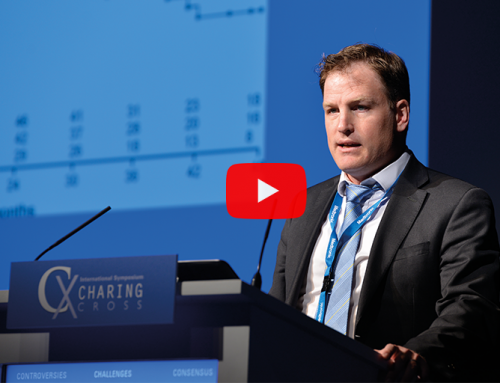
Suresh Vedantham
Delegates heard yesterday the results of the ATTRACT randomised controlled trial, which showed that the addition of catheter-based intervention to anticoagulation failed to significantly decrease the occurrence of post-thrombotic syndrome in deep vein thrombosis patients who received this treatment strategy when compared to its occurrence in patients who received anticoagulation alone.
The ATTRACT trials results were presented by principal investigator Suresh Vedantham (St Louis, USA). The primary outcome measure was the cumulative occurence of post-thrombotic syndrome between six and 24 months after randomisation, as measured by the Villalta scale. The trial data showed that patients treated with pharmacomechenical catheter-directed thrombolysis (PCDT) had a 46.7% post-thrombotic syndrome rate, compared with 48.2% in the no-PCDT group at two years (p=0.56).
Short-term data from the trial showed that the effects of PCDT resulted in more major bleeds in the interventional arm (1.7%) than in the in the control arm, (0.3%; p=0.049). There were also significantly more instances of any bleeding (4.5%) in the interventional arm vs. 1.7% in the control arm (p=0.049). There were no fatal or intracranial bleeds in either arm of the trial indicating that few patients will be harmed as a result of thrombolytic therapy. Vedantham also noted that PCDT was less effective in patients older than 65 years (p=0.038).
Trial results showed that PCDT reduced early symptoms and post-thrombotic syndrome severity, and that patients presenting with an iliofemoral DVT had better results with PCDT than those treated for a femoropopliteal deep vein thrombosis.
Vedantham summarised the trial results by stating that PCDT is not indicated for routine use in proximal deep vein thrombosis as it does not prevent post-thrombotic syndrome and does increase bleeding, with elderly patients being particularly poor candidates. He said, “Further study and clinical use should be targeted. PCDT reduces acute DVT symptoms and post-thrombotic syndrome severity. In iliofemoral deep vein thrombosis, where the risk of post-thrombotic syndrome is greater, there is possibly increased PCDT effect. In patients with severe symptoms, aged below 65 years, or with low bleeding risk, anticoagulation should be used first for five to seven days if the limb is not acutely threatened.”







